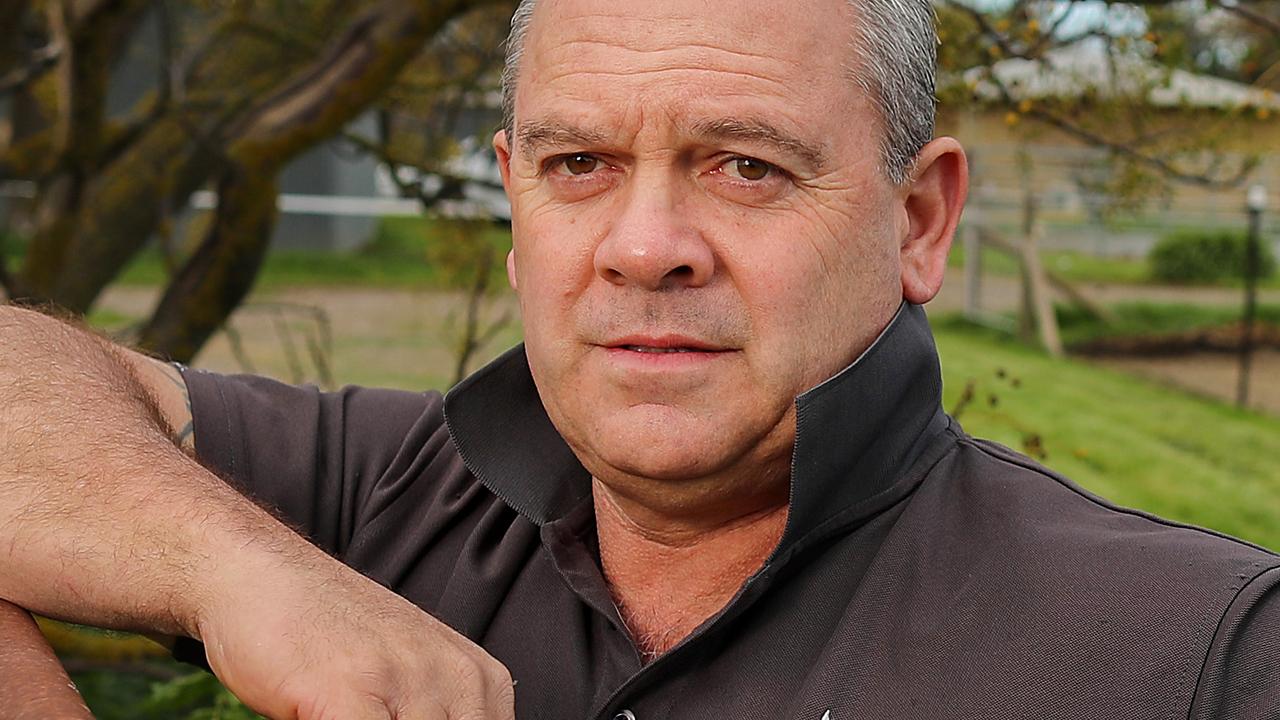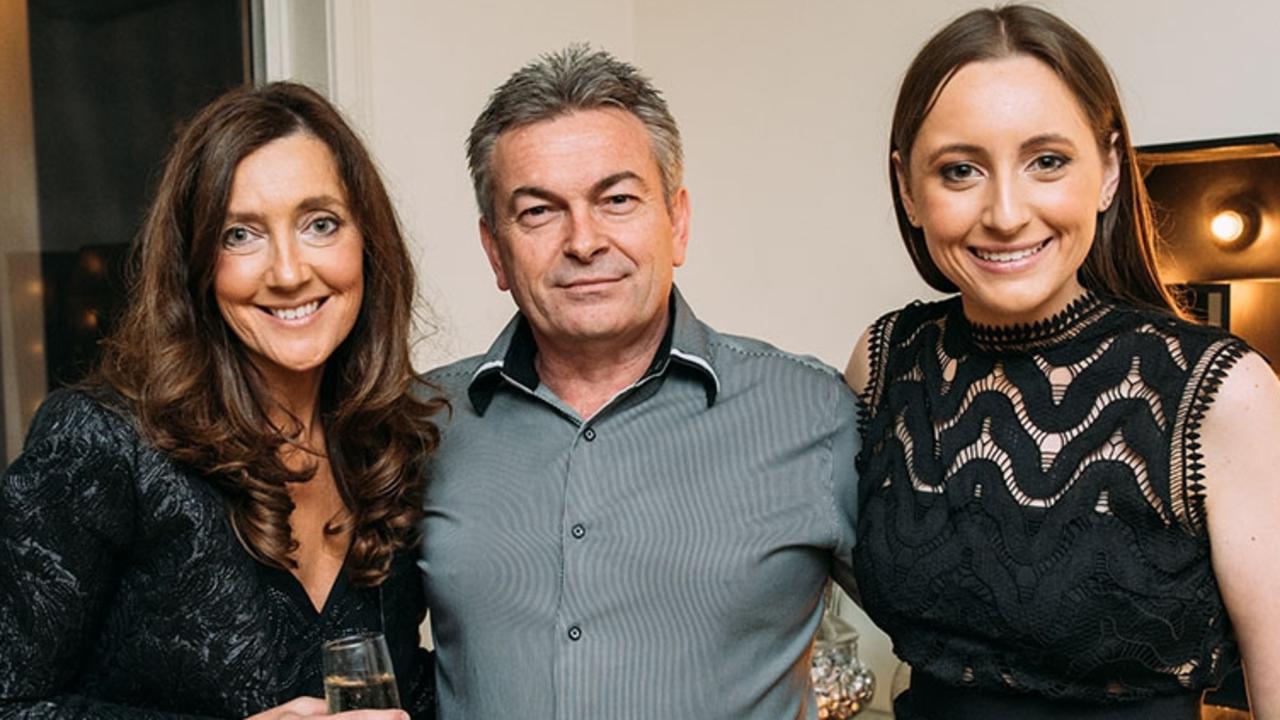Andrew Rule: Catching killers still an old-school feat
That police charged a suspect in the Courtney Herron killing case so swiftly doesn’t surprise as much as perhaps it should. But we should all be grateful for brilliant, old-school police work, writes Andrew Rule.
Look out the upper windows of the Royal Children’s Hospital, from the wards where so many babies’ lives are saved, and you can see the spot in Royal Park where poor Courtney Herron’s life ended.
Courtney was 25 but she was still someone’s baby, a time that will seem so recent to her broken-hearted family; the ones who saw her through the safe harbour of childhood until she fell off the edge of their world.
Her bloodied and battered body was found last Saturday morning by a walker with a dog, as bodies often are.
By Sunday night, in just 36 hours, the accused killer was arrested; a remarkable achievement in difficult circumstances.
Brilliant and dedicated police work beat the fear that a random killer might strike somewhere else. We should all be grateful.
That police charged a suspect so swiftly doesn’t surprise as much as perhaps it should. It all seems so easy to us armchair detectives, at home and in newsrooms. It is ironic, really; our expectations are high, sometimes unreasonably so, precisely because police so often make quick arrests after homicides.

We get used to those instant results. Many murders, although senseless, are relatively easy to unravel because they’re not exactly random. The prime suspect is often “close to home” — a partner, an “ex”, an estranged family member or a known enemy, usually quickly identified.
Then there are the technological advances that digital natives take for granted: the mobile telephone that is a de facto tracking device; the car number plate that shows on the surveillance camera networks in city streets and major roads; the ubiquitous “dashcams” and domestic and commercial security cameras that record images around the clock; credit and bank cards that leave an electronic trail.
Add to this the instant computer access to the police database and other relevant records held by government departments or bodies like VicRoads and the tax office to the various utilities: gas, electricity and, of course, telephone companies.
It is hard to believe that in the relatively recent past, the era of crammed filing cabinets and typewriters and telephone landlines, frazzled detectives toiled through endless loose-leaf files and intelligence reports holding thousands of names, descriptions and fingerprints.
Now, in the 21st century, most of us leave a trail only slightly harder to trace than an elephant in snow. But it means that when investigators are looking for someone “off the grid”, and to a deadline, they go back to the sort of foot-slogging used in the 1950s.

That was the case last Saturday when homicide detectives (and other crime department investigators) fanned out across inner Melbourne to find a faceless and almost traceless man. A nightmare assignment because the quarry was not only unknown but “below the radar”.
On the first day they had no name or image to work with. It seemed Courtney Herron had no known partner or current boyfriends to be checked and eliminated. In those circumstances, media publicity was vital to winkle out a lead.
The break came on Sunday afternoon when people who had been to a gathering in the inner suburbs on the Friday night recalled that Courtney had been there — and had left at the same time as another young homeless person, a man in his 20s the witnesses could describe only in general terms except for a small facial tattoo.
Now investigators had a toehold, but that’s all. As one insider told a reporter later: “It was back to the old days. He (the suspect) had no phone, no car, nothing to follow.”
Investigators, mostly on foot, fanned out around the city and approached groups of homeless people, looking for a young man with a particular tattoo.

After using “a lot of shoe leather”, according to one source, they found the man with a group of rough sleepers in Bourke St. By Sunday night, following what one officer rightly calls “an outstanding job”, Henry Richmond Hammond, formerly of Sydney, was arrested and will eventually face trial.
Meanwhile, senior police (and politicians) are understandably relieved that the apparent randomness of Courtney Herron’s death did not get enough time and oxygen to fuel panic and fear.
Because, as with three other highly publicised violent deaths of young women in the last year, the killing of Courtney resembled what the community fears most: an apparently deranged attack by an unknown person.
Those crimes were the rape and murder of young comedian Eurydice Dixon at Princes Park last June, the death of Israeli exchange student Aiia Maasarwe after she got off a tram at Bundoora in January, and the killing of Natalina Angok in Chinatown on April 24. In the first two cases, identifying the victim did not help identify the alleged attacker because the perpetrators were unknown to the victims. As with Courtney Herron, police had to start from scratch.

Each case reminded us of the killing of Masa Vukotic, the teenage schoolgirl stabbed in a frenzied attack on a walking path near her parents’ Doncaster home four years ago.
There was no immediate reason to suspect the man now imprisoned for Masa’s murder, Sean Christian Price.
But when police checked closed-circuit footage taken on buses
leaving the area, they identified a potential suspect who turned out to be Price — a violent rapist and repeat offender who had, tragically, been released on bail.
Investigators acted fast but the unhinged Price assaulted another woman before he was arrested. It could easily have been a second murder. Or a third.
The shared sense of dread when a deranged killer is on the loose puts police under enormous political, public and personal pressure to get a result.

Looming over such cases is the spectre of serial killer Paul Charles Denyer, who murdered three young women near Frankston in 1993 before an alert homicide detective caught Denyer in a lie during an interview. Lying about which hand he used to hold a knife was enough to convey what lawyers call “consciousness of guilt”. The reign of the “Frankston killer” was over.
Denyer (still serving time as Paula Denyer) killed on wet days, knowing the rain would wash away clues. He was the most dangerous of killers: cunning and logical but also mad, bad and irrational. He killed for the same sadistic reasons he tortured kittens as a boy.
Denyer has something in common with Sean Price and most likely with the alleged offenders in the other cases described here.
Despite empty claims to the contrary, they are irrelevant as examples of men who treat women badly. The mere fact that police, politicians and various commentators trip over themselves to cite them as further examples of “men’s behaviour” does not make it so.
Here is a list of real examples of appalling male behaviour.
The Australian cricketer Alex Hepburn — intelligent, articulate, and educated — who was jailed in England recently for having sex with a sleeping woman as part of a pathetic sexual conquest competition with his equally despicable mates.
The group of well-paid, well-trained, mentally competent AFL footballers having group sex with a vulnerable young woman, an example of “pack” behaviour that led to an award-winning book, Night Games, that cast light on the “gang bang” mentality of some sportsmen.
A former AFL superstar (and current commentator) breaking a champagne glass on his partner’s face in Miami in 2007. A smashing example by a repeat offender.

A talented actor with a famous surname, a cocaine habit and a tendency to assault female partners. He is a good example of a privileged man whose personal demons never seem to surface when he is facing, say, a male bouncer bigger than himself.
Then are all the apparently “respectable” husbands who beat their wives in secret, something so common that overworked police spend a lot of time trying to prevent it.
Police have had plenty of work to do in their own patch. There were, or still are, the sort of police who stood over prostitutes and homeless teens for sex.
A safe example of a bad cop is the late detective sergeant Paul Higgins, who was jailed for corruption but never for the rapes that he got away with. Other names come to mind.
Then there were the rogue cops who used Maryborough police station as their own private brothel for a decade. They make an outstanding example of appalling male behaviour. The former ombudsman, Dr Barry Perry, found in 1997 that most of the claims were substantiated but that the victims — “vulnerable women and teenage girls” — were too frightened to testify against the dirty dozen, a group of some 12 officers.
The list is almost endless. Which makes it ridiculous for police commissioners and earnest politicians to jump in and recite an automatic mantra about men’s attitudes following such grotesque homicide cases as the deaths of Courtney Herron and Aiia Maasarwe and Natalina Angok.

To use such a tiny number of terrible events to defame half the population — the law-abiding, respectable and respectful majority of men — seems so patently artificial and mealy-mouthed that those doing the talking risk
sounding insincere.
And that will only undermine public support for a totally valid stand against ugly attitudes towards women.
And so back to the latest tragedy in Royal Park. A court will ultimately decide the guilt or innocence or mental competence of the accused man in the death of Courtney Herron.
But nothing will alter the fact she died in a crazed and unpredictable event, as terrible but as meaningless as a lightning strike.



